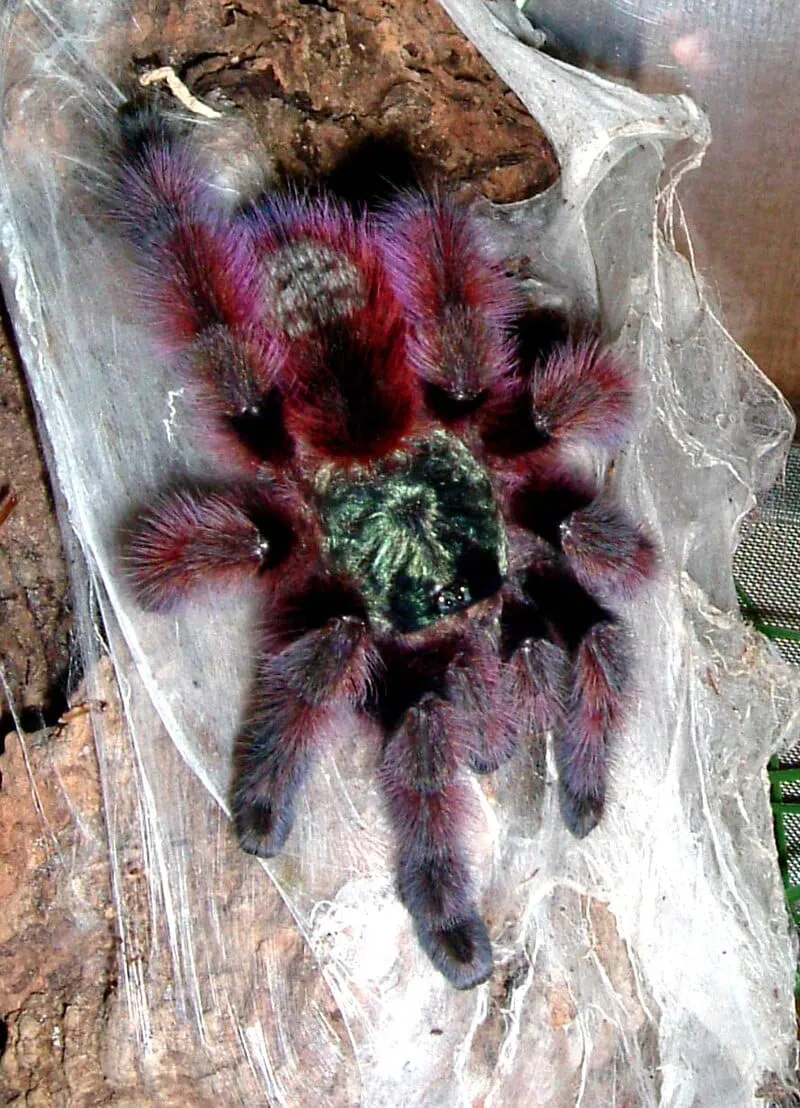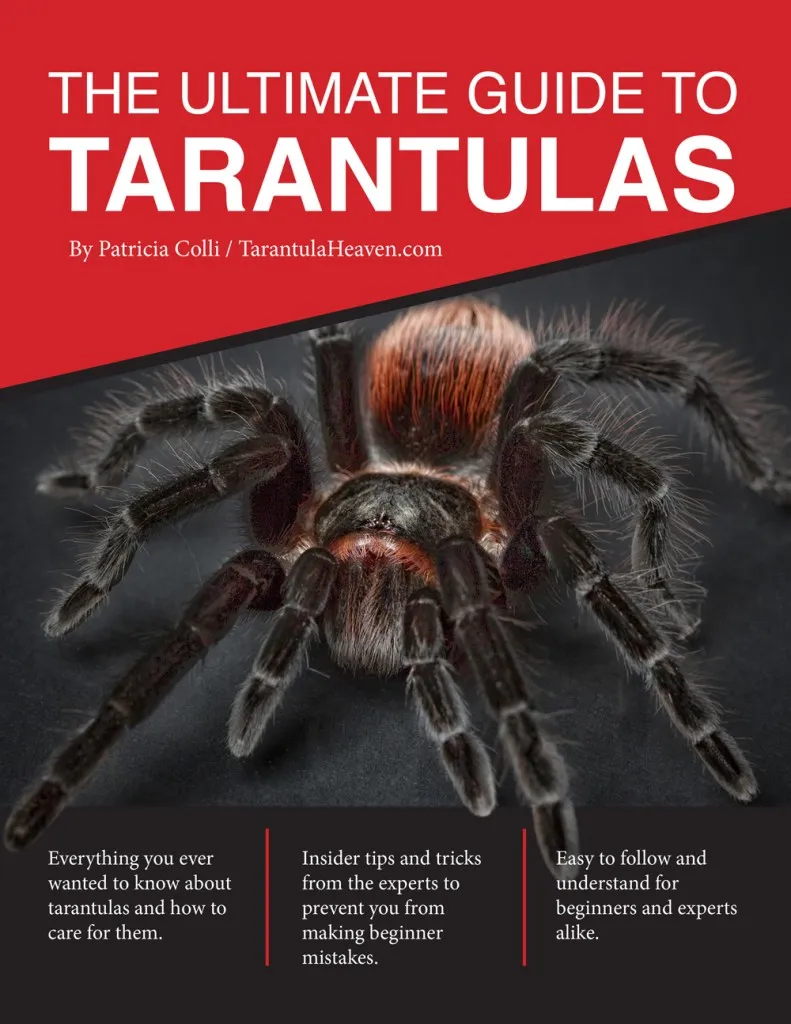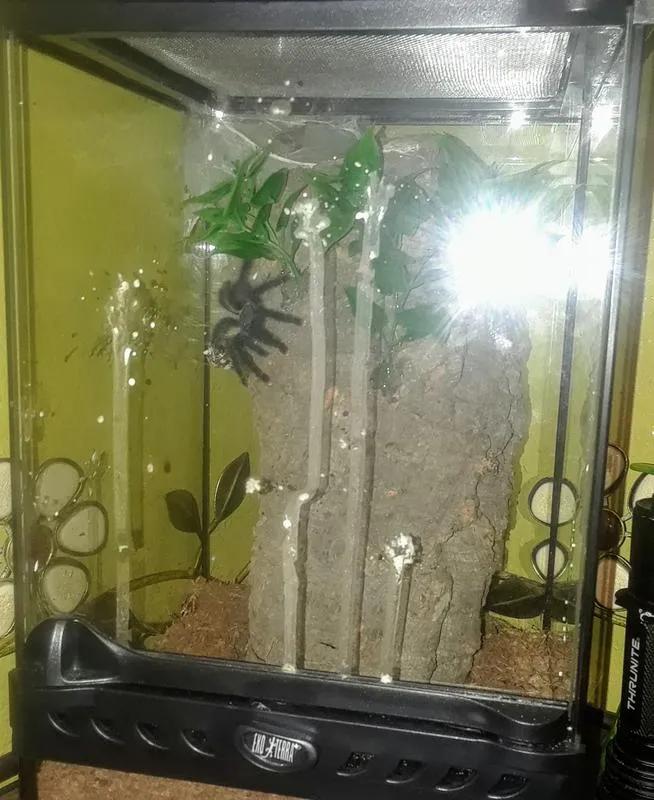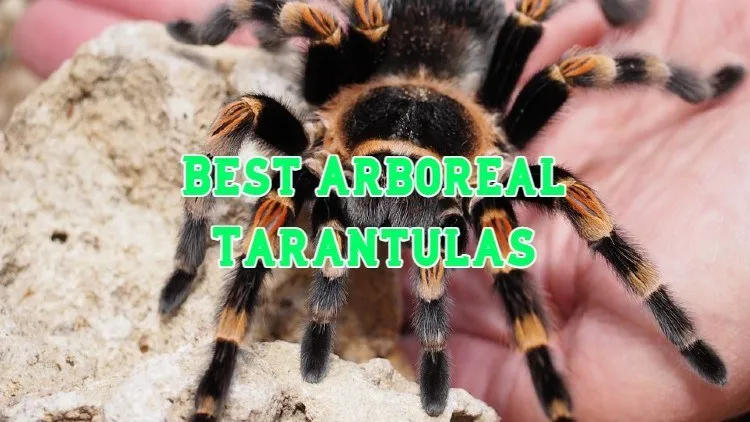Why Choose Arboreal Tarantulas as Beginners
Arboreal tarantulas, with their vibrant colors and unique behaviors, often captivate the interest of both experienced arachnid enthusiasts and newcomers alike. When considering the best beginner arboreal tarantulas, it is crucial to understand why these fascinating creatures can be a suitable choice for individuals new to the world of tarantula keeping. Arboreal tarantulas offer a distinct experience compared to their terrestrial counterparts. Their arboreal lifestyle means they primarily reside in trees or elevated structures, providing an opportunity to observe intriguing climbing and web-spinning behaviors. For beginners, this can offer a more engaging and dynamic pet experience. They present different challenges and rewards, making the learning process exciting and educational. Selecting the right species is key to a positive experience.
Advantages of Arboreal Tarantulas
Choosing an arboreal tarantula as a beginner offers several advantages that can make the experience rewarding and enjoyable. Arboreal tarantulas often have distinct personalities and behaviors that make them fascinating to observe. Their web-spinning abilities create intricate habitats within their enclosures, adding an artistic element to their care. The vibrant colors of many arboreal species provide a visually stunning pet. These tarantulas are typically less prone to bolting (running away) compared to some terrestrial species, making handling and enclosure maintenance slightly easier for those new to tarantula keeping. They have specific enclosure requirements that are visually appealing, like vertical space and climbing structures. This makes it easier to create a well-designed and enriching habitat. The selection of arboreal species suitable for beginners ensures a less stressful entry into the hobby.
Considerations Before Getting an Arboreal Tarantula

Before welcoming an arboreal tarantula into your home, it’s essential to consider specific factors to ensure a successful and fulfilling experience. Research is crucial; understanding the specific needs of the species you’re considering is paramount. Different species have varying temperature, humidity, and feeding requirements. Space and enclosure setup are important. Arboreal tarantulas require vertical space and climbing structures. Make sure you have adequate space available, and prepare to create a suitable enclosure with the right substrate, ventilation, and decor. Handling and temperament also play a role, some species are more docile and tolerant of handling than others, while others are best left undisturbed. The safety of the owner is vital, so research the venom potency and temperament of your chosen species. Finally, budget and commitment are important. Costs include the tarantula, enclosure, substrate, decor, and food. Tarantulas can live for many years, so be prepared to provide long-term care.
Top 5 Beginner-Friendly Arboreal Tarantula Picks
Choosing the right species is critical to a positive experience. Here are the top 5 arboreal tarantulas best suited for beginners, known for their manageable temperaments, care requirements, and captivating appearance. Each species offers a unique experience, allowing newcomers to explore the world of arboreal tarantulas with confidence.
Green Bottle Blue (GBB) Tarantula
The Green Bottle Blue (GBB) tarantula (Chromatopelma cyaneopubescens) is a visually stunning species. Its vibrant colors, including metallic blue legs, a green carapace, and an orange abdomen, make it a favorite among keepers. Although they can be skittish, GBBs are generally considered manageable. They create elaborate webs, adding to the beauty of their enclosure. Their care requirements are moderate, making them an excellent choice for those looking for a beautiful and engaging tarantula.
Understanding the GBB’s Temperament

GBBs are known for being fast and skittish. While not particularly aggressive, they may bolt if they feel threatened, which means it’s not the ideal choice for frequent handling. They are often found webbed up in their enclosures. They tend to be more defensive. Keeping their environment stable helps to reduce their skittishness. Handle them with caution and always be mindful of their potential to flee.
GBB Tarantula Care Requirements
Caring for a GBB involves providing a well-ventilated enclosure with vertical space. A substrate mix of coco fiber and vermiculite helps maintain humidity. Keep the temperature between 75-85°F (24-29°C) and maintain a humidity level of around 60-70%. Feed them a diet of appropriately sized insects like crickets, roaches, and mealworms. Ensure a water dish is always available. Regular cleaning of the enclosure is important. They are relatively easy to care for, but their speed requires careful handling.
Avicularia Avicularia (Pinktoe Tarantula)
The Pinktoe tarantula (Avicularia avicularia) is another popular beginner choice. They are known for their docile nature, beautiful pink toe pads, and gentle temperament. They are generally less defensive and more tolerant of being handled than some other species. Their manageable care requirements and striking appearance make them a fantastic option. This tarantula’s relatively calm demeanor provides a less stressful entry into the hobby.
Pinktoe Tarantula Temperament and Handling

Pinktoes are known for their calm temperaments. They rarely bite and prefer to retreat. This makes them suitable for handling with care and minimal stress. They are less likely to exhibit defensive behaviors than other species. When handling, always be gentle and use a soft, wide container if you need to move them. Their gentle nature makes them a great choice for beginners, offering a relatively safe handling experience.
Pinktoe Tarantula Habitat and Feeding
Pinktoes thrive in well-ventilated enclosures with vertical space and plenty of climbing opportunities. A substrate mix of coco fiber and sphagnum moss works well, keeping the humidity at around 70-80%. Maintain a temperature of 75-80°F (24-27°C). They should be fed a diet of crickets, roaches, or other appropriately sized insects. Ensure they have a shallow water dish. Regular misting helps maintain humidity. Proper care leads to healthy and thriving Pinktoe tarantulas.
Caribena Versicolor (Versicolor Tarantula)
The Versicolor tarantula (Caribena versicolor), also known as the Antilles Pinktoe, is a truly beautiful species, with iridescent blue, purple, and green hues. They exhibit a graceful, elegant appearance. Although they can be delicate, they are generally considered manageable. Their stunning colors and moderate care requirements make them an appealing choice for beginners who are prepared to provide a stable environment.
Versicolor Tarantula Characteristics

Versicolor tarantulas are known for their vibrant coloration. Their coloration shifts as they mature, often starting with blues and transitioning to a mix of greens, purples, and pinks. These tarantulas are typically skittish but are not particularly defensive, preferring to retreat. Their delicate nature means they require a stable environment. Their beauty and unique characteristics make them a rewarding species for those willing to meet their specific needs.
Versicolor Tarantula Enclosure and Care
Versicolor tarantulas need well-ventilated enclosures with plenty of vertical space and climbing branches. Maintain a substrate of coco fiber and sphagnum moss to hold humidity, and keep the humidity around 70-80%. The temperature should be between 75-80°F (24-27°C). Feed them a diet of small crickets or roaches. Provide a small water dish. Frequent misting is essential to maintain the correct humidity levels. Providing the right environment ensures the Versicolor tarantula’s health and vibrant coloration.
Psalmopoeus Cambridgei (Panama Blonde)
The Panama Blonde (Psalmopoeus cambridgei) is a hardy, fast-growing species that is relatively low-maintenance. While they can be skittish and fast, their care requirements are straightforward, and their golden-brown coloration is attractive. These tarantulas are a good option for beginners who prioritize ease of care and are comfortable with a slightly quicker species.
Panama Blonde Behavior and Handling

Panama Blondes are known for their speed. They are fast, skittish, and can move quickly if startled. They are not very defensive, but they may flick urticating hairs as a defense mechanism, so handling is best avoided. Observe them from outside their enclosure. Their active nature and manageable care make them a good choice for those who prefer observation.
Panama Blonde Diet and Habitat Needs
These tarantulas need a moderately humid enclosure with a substrate of coco fiber and a temperature range of 75-85°F (24-29°C). Humidity should be maintained around 60-70%. They require a shallow water dish and should be fed a diet of appropriately sized insects like crickets or roaches. Their care is relatively simple, making them a good option for beginners.
Poecilotheria Regalis (Indian Ornamental)
While the Indian Ornamental (Poecilotheria regalis) is a more advanced choice than the others on this list, it can still be a good beginner species. Their striking patterns make them visually stunning, and their relatively predictable behavior makes them somewhat manageable. They require a very high level of caution due to their potent venom. Their intricate markings and manageable care make them an engaging species for experienced beginner.
Indian Ornamental Appearance and Temperament

The Indian Ornamental has a striking appearance with a complex pattern of black, white, and yellow markings. They are known for their defensive nature, and they should be treated with respect. They can be fast and unpredictable, so handling should be avoided. They are not suitable for those new to tarantula keeping.
Indian Ornamental Habitat and Maintenance
Indian Ornamentals need large enclosures with plenty of vertical space and sturdy decor to climb on. Maintain a temperature of 75-85°F (24-29°C) and humidity around 60-70%. Provide a deep substrate of coco fiber and provide a water dish. They are best kept in a secure enclosure due to their speed. Careful consideration and research are vital before keeping this species.
Essential Care Tips for Beginner Arboreal Tarantulas
Providing proper care is essential to ensure your arboreal tarantula thrives. Understanding enclosure setup, feeding, humidity, temperature, and handling practices will set you up for success. These practices will ensure that your tarantula is happy, healthy, and safe.
Enclosure Setup
Proper enclosure setup is crucial for the well-being of your arboreal tarantula. Choose a vertical enclosure that is appropriately sized for the species and their adult size. The enclosure should be well-ventilated and constructed of glass or plastic. Provide a substrate of coco fiber, vermiculite, or a mixture of both to help maintain humidity and allow for burrowing. Include ample climbing structures such as cork bark, branches, or artificial plants to mimic their natural habitat. Always secure any decor to prevent it from falling. Ensure the enclosure has a secure lid to prevent escape.
Feeding Your Tarantula
Feeding your tarantula is an important aspect of its care. Provide appropriately sized insects such as crickets, roaches, or mealworms. The size of the prey should be roughly the size of the tarantula’s abdomen. Feed juveniles 2-3 times a week, and adults every 1-2 weeks. Remove any uneaten prey within 24 hours to prevent stress and potential harm to the tarantula. Ensure your tarantula has access to fresh water. Observe your tarantula’s feeding habits and adjust the frequency and amount of food accordingly. Feeding is an essential element to keeping your tarantula healthy and active.
Humidity and Temperature Control
Maintaining the correct humidity and temperature levels is critical for your arboreal tarantula’s health and well-being. Use a hygrometer and a thermometer to monitor both. The ideal temperature for most species is between 75-85°F (24-29°C). Humidity requirements vary depending on the species. Generally, arboreal tarantulas require humidity levels between 60-80%. Mist the enclosure with dechlorinated water as needed to maintain humidity. Ensure adequate ventilation to prevent mold growth. Monitoring and adjusting the humidity and temperature will help you create a healthy environment.
Handling and Safety
Handling tarantulas should be done with caution, especially for beginners. Some species are more docile than others, but all tarantulas can bite if they feel threatened. Avoid handling unless necessary, and always do so with extreme care. If you must handle your tarantula, do so over a soft surface. Never handle a tarantula when it is about to molt or has just molted, as they are vulnerable during these times. Always wash your hands before and after handling your tarantula. Understanding your tarantula’s behavior and temperament, and being aware of potential risks, is crucial for a safe experience.
Common Mistakes to Avoid
Avoiding common mistakes is essential for successful tarantula keeping. Overfeeding your tarantula is a frequent error; only feed them appropriately sized insects. A cluttered enclosure, with too much decor, can make it difficult to maintain. Handling your tarantula when it is about to molt or has just molted is dangerous. Incorrectly setting the temperature or humidity levels in their enclosure can also cause issues. Failure to research the species specific needs can lead to stress and health problems. Over-handling and lack of space are also detrimental. By avoiding these common errors, you can provide a better living environment for your tarantula.
Conclusion
Choosing the best beginner arboreal tarantula involves careful consideration of several factors, including temperament, care requirements, and overall suitability for new keepers. The Green Bottle Blue, Pinktoe, Versicolor, Panama Blonde, and Indian Ornamental tarantulas offer unique experiences. Prioritizing thorough research, understanding their specific needs, and following the essential care tips outlined in this guide will help you succeed in the hobby. By selecting the right species and providing the right environment, you can enjoy a rewarding and educational journey into the world of arboreal tarantulas. Proper care and understanding are key to enjoying these fascinating creatures.
